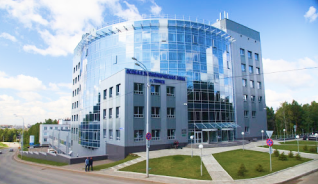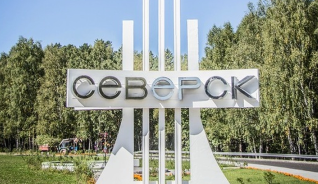Chinese newspaper People’s Daily published an article about Tomsk
- Home
- Information Center
- Investment News
- Year 2011
- October
Tan Wujun, reporter of one of the world's leading newspapers and the most influential Chinese newspaper, shared his impression of Tomsk in an article published in People's Daily, China.
"Taking a walk around Tomsk in golden fall you cannot help being impressed by birch trees dressed in gold, serene waters of the Tom River, a century-old history of its universities, and its special economic zone.
Located in Siberia, the city of Tomsk founded the first university in the Asian part of Russia. The population of the city is about 500,000 people. Tomsk has over 20 universities, among them 6 state universities. The student population of the city is about 100,000 people. Tomsk has the highest ratio of students per capita in Russia proudly boasting the title of the educational capital of Siberia. As of late, with the help of its powerful educational base, Tomsk has been developing innovative economy and has already come to the forefront of the modernization of Russia's economy.
If you take a walk in the Tomsk SEZ which covers an area of two square kilometers, you will see two modern buildings – the innovation building and the Engineering Center – and construction landscapes. The SEZ already has 55 registered high-tech companies. It was established in 2005, being one of the first SEZ projects approved by the Russian Government, and one of the four zones of technical innovation type. According to the General Director of the Tomsk SEZ Mr. Baryshev, resident companies are provided with various incentives such as zero import duty, reduced rental rates, and other tax benefits. Mr. Baryshev believes that Tomsk's geographic position – in the remote and cold Siberia – has prevented traditional industries from developing. That is why the SEZ has focused on the high value added industry of innovations such as electronic and information technologies, new materials and nanotechnologies, medicine and biotechnologies, and resource-saving technologies.
The resident companies are absolutely certain about the development of the innovative economy. The director of one of the resident companies which produces nano-dressing for wounds told that the invention of the nano-dressing took 11 years of research. The dressing effectively heals various types of septic wounds, burns, and cuts two times faster than traditional dressing does, and significantly reduces pain. The nano-dressing has already been approved for retail sale in Russian pharmacies. Foreign companies are now taking a close interest in this product. The Russian Ministry of Education and Science has already approved spending 150 million rubles (1 US dollar is equivalent to approx. 30 Russian rubles) on commercial production of the nano-dressing. By 2013, the annual output of this product should reach 10 million dressings, or 7% of the market share, worth more than 10 billion rubles.
Tomsk also takes advantage of the local natural resources which are a good point of attraction for foreign capital and high-tech companies. Tomsk Region is reach in forest resources, including pine and cedar. In cooperation with an Australian company Tomsk developed a medication based on pine needles which can be used to treat gastrointestinal and hepatic disorders, boost immunity and metabolism.
In an interview to our newspaper, Tomsk Region Governor Viktor Kress said that in recent years the Russian Government adopted a strategic plan to modernize the economy of the country, and for Tomsk that had become a good opportunity to develop an innovative economy. Tomsk used to build its economy upon the defense, petrochemical, and forest industries. In the 90s, when the defense orders and forest demand went down, Tomsk was forced to look for new growth points for its economy. Tomsk is a center of Siberian education and science; one in five Tomsk citizens is a student. This is a plentiful source for development of a knowledge-based economy. Since the creation of the SEZ, the local government has never stopped working on improving the investment climate in the Region, developing its infrastructure, and stimulating the development of innovative companies. Today, the share of high technology companies in the economy of the Region is 15%, with total output of innovative products in 2010 exceeding 20 billion rubles, yielding only to the petrochemical industry. Viktor Kress claims that Tomsk is interested in the Chinese investment and there is every opportunity for cooperation.
Development of the innovative economy has put new heart into the more than 400-year-old city. Economic development reduces unemployment and attracts foreign talent. Every year the population of Tomsk grows by 7,000 people, which looks very optimistic given the overall reduction in the total population of the country. Tomsk is undoubtedly enjoying the development of the innovative economy. However, as Aleksey Baryshev warns, "In the face of an ever increasing global competition Tomsk should work even harder to establish itself in the market."
It should be reminded that on September 19-20 Tomsk Region welcomed journalists from the UK, USA, France, China, Iran, and India on a press tour organized by the Region Department of Information Policy and Public Relations and Russian International News Agency RIA Novosti. The visiting journalists represented key mass media in their respective countries, such as Iranian IRNA, the Financial Times, The Hindu, Le Figaro, The Moscow Times, Chinese 'People's Daily', national French TV channel TF1, and online economic and financial information providers DealWatch (by Euromoney Institutional Investor) and Mergermarket (by Financial Times Group).








